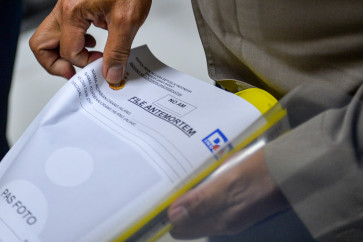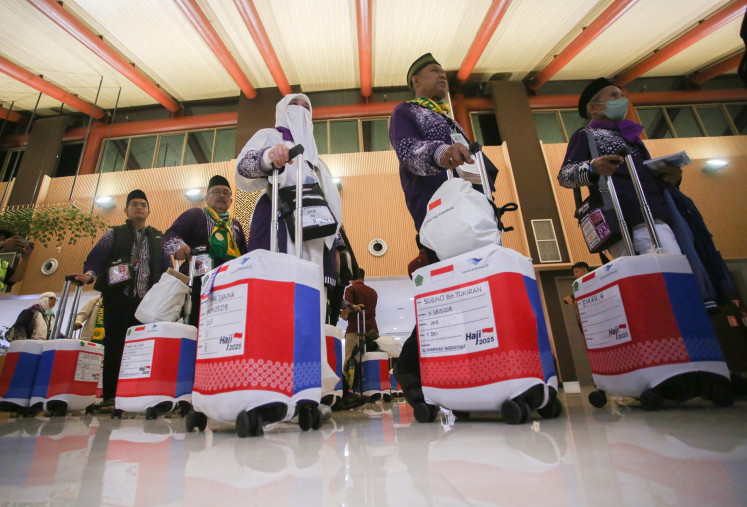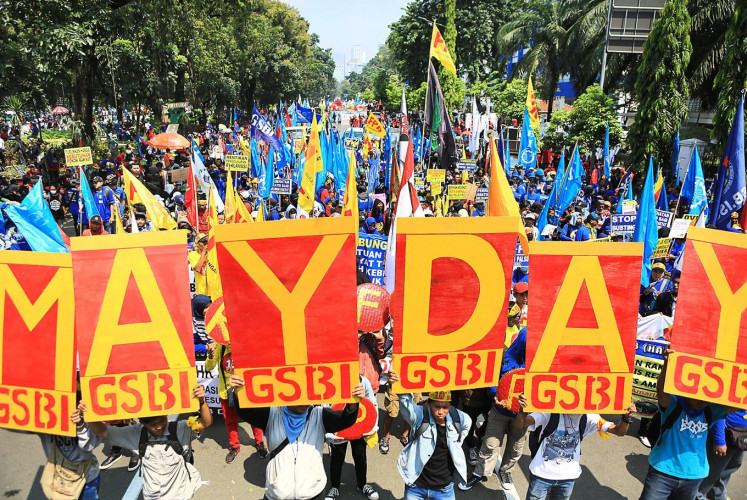Manufacturing polarization: More ‘kadrun’ and ‘cebong’ in 2024?
A much bigger danger actually comes from the co-optation of said industries by the political elites.
Change text size
Gift Premium Articles
to Anyone

A
s the pro-government parties seek to forge a grand alliance to take on the coalition of parties backing the opposition figurehead, Anies Baswedan, fears are growing that we will have another polarizing presidential election.
This is partly because the former Jakarta governor himself is already a polarizing figure. It is an electoral baggage that will follow him throughout his political career. The former rector of Jakarta’s Paramadina University was elected governor in the most divisive election in the capital, during which thousands of conservative Muslims rallied against his opponent, Basuki “Ahok” Tjahaja Purnama, an Indonesian Christian of Chinese descent.
But regardless of your opinion of Anies, he alone would not be able to shape the tone of the overall election campaigns. If we are concerned the 2024 race is to become ideologically divisive, then we need to identify the structural problems that have enabled the political elites to manufacture ideological polarization in cyberspace to further their interests.
First, we need to acknowledge the elephant in the digital room: The business model of big tech is hurting democracy.
Studies have shown how social media companies such as Meta and Twitter are complicit in the proliferation of online mis/disinformation. This is because, quoting Woolly (2023), “they make money from the spread of content, whether the content is good or bad, true or false, useful or damaging”.
In a similar vein, Zuboff (2019) argues mis/disinformation is part and parcel of what she calls the “surveillance capitalism” of Big Tech, which prescribes the act of “radical indifference” toward online content.
Big tech has promised to do more to combat fake news and other negative content to make their social platforms safer for everyone. But as long as it relies on virality to make a profit, we should not hold our breath; it will take some radical measures to actually make a difference.
That said, it is wrong to suggest social media companies alone are responsible for the rise of online mis/disinformation. While they clearly play a critical role in creating a digital environment that leads to the emergence of the click-farm and “buzzing” industries, a much bigger danger actually comes from the co-optation of said industries by the political elites.
There is a reason why the budding industry of social media campaigning, which relies on the use of bots and influencers, is still highly unregulated. It has served the interests of the elite quite well now that they have become increasingly reliant on digital technology to keep them in power.
Indonesia’s oligarchic elites are mostly responsible for manufacturing ideological polarization online, particularly ahead of or during elections, by deploying a large number of bots and cybertroopers, or buzzers, to engage in massive or sustained computational propaganda campaigns.
It is important to note not all mis/disinformation can be categorized as propaganda, and vice versa. Mis/disinformation could be politically anodyne or could simply be an honest mistake, though it could inadvertently serve the interests of the elite.
Computational propaganda, on the other hand, is a deliberate attempt to steer people’s emotions and manipulate their opinions, regardless of whether the content used as bait is factual or not. Mis/disinformation is bad, yes; but propaganda, if carried out systematically over a long period of time, could have far greater consequences.
In the last few years, we have seen Indonesian cyberspace littered by angry vitriol between cebong and kadrun, which refer to the supporters of the incumbent government and its detractors, respectively. The emergence of the two words could be organic, but their currency and sustainability are most likely the results of elite engineering.
The word kadrun, a portmanteau of kadal gurun (desert lizard), is more than just a derogatory term for the Islamist opposition. It has an ideological purpose, for it is mainly used to describe the opposition as an aberration to the hegemonic notions of Pancasila and the Unitary State of the Republic of Indonesia (NKRI). The word cebong, meanwhile, is the Indonesian word for tadpoles, used to generalize all supporters of the incumbent government as uncritical and blinded by fanaticism. It could also be used to portray them as nominal Muslims, if not anti-Islam.
Such words are politically and ideologically divisive and thus quite potent if used in a computational propaganda campaign. Unlike misinformation, which could easily be rectified by simple fact-checking, computational propaganda rearticulates and sharpens the existing ideological divide in the public psyche, further deepening preexisting polarization.
As we know, the ideological warfare between Islamists and secular nationalists goes way back to the earliest period of Indonesian nationalism. The political elites will capitalize on that decades-old ideological cleavage, turning the cyberspace, where right-wing and religious extremism thrives, into an arena of contestation between two competing forms of elite-driven populism: secular nationalist populism versus Islamist populism.
We have reason to believe the ideological polarization will continue to be manufactured as the 2024 elections draw closer. This is indicated by the fact that top influencers linked to the ruling coalition, some of whom now sit as commissioners of state-owned enterprises, and the opposition camp, are still using the language of propaganda in their social media posts.
It is imperative the General Elections Commission (KPU) issue a stronger regulation on the use of social media for political campaigns.
It must urge social media companies to be more responsible in their operations by making its algorithm more sensitive to inorganic mobilization aimed at dividing the public along ideological lines. It must enforce a strict rule to ensure political parties and candidates are fully transparent about their social media strategy, including the people they hire.
For our democracy and the very fabric of society are at stake.
***
The author is an editor at large of The Jakarta Post and a PhD candidate at the University of Melbourne’s Asia Institute.









